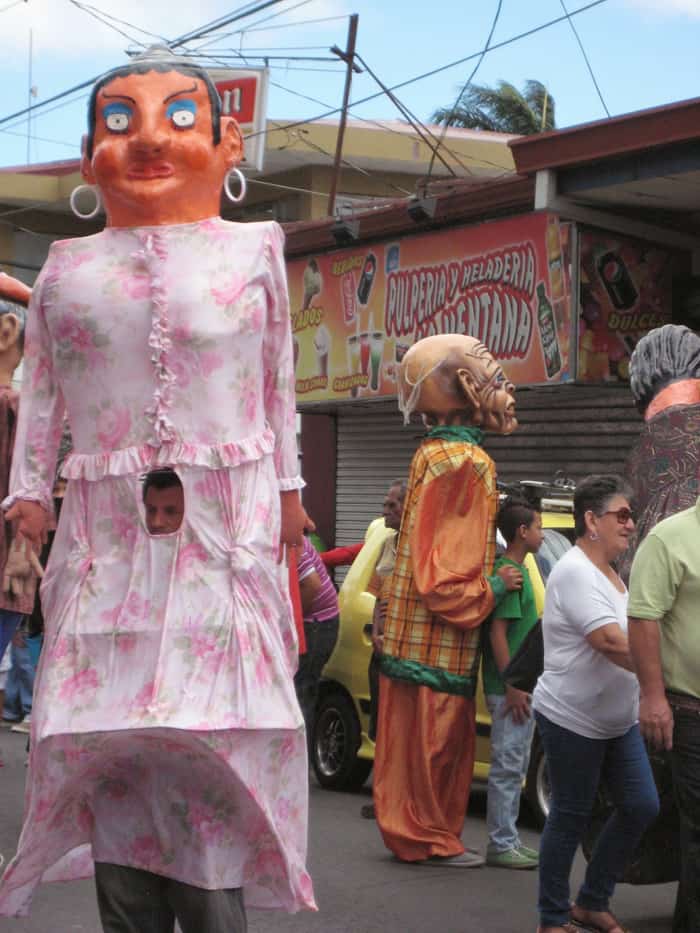This Halloween, be a part of Costa Rica’s fun and free costumed tradition — fling yourself into the contagious festivals and parades that flood the streets during Día Nacional de la Mascarada Costarricense.
The first time I ever saw Costa Rica’s traditional masquerade puppets, I wondered if the larger-than-life, dancing effigies might have popped out of one of my nightmares. The cacophonic music, clamoring cymbals and banging drums only added to the surreal scene. Certainly, it didn’t help to see small children cowering and hiding their faces behind their mommas’ skirts as the whirling dervishes careened recklessly toward the crowds.
Now that I’m older and wiser, I’m no longer terrified but fascinated by the costumed characters that come out to play and dance at festivals around the country. This Halloween, I’ll be among those lining the streets of Escazú to await the arrival of the parade of rollicking costumed characters.
The papier-mâché heads are gigantic — stretching like towering cartoon characters over the hyped-up crowds. Each one represents a traditional character: a grinning and toothy devil, a bug-eyed skull, the Giant and the Giantess. Many of the heads represent the characters from the traditional, haunted tales of Costa Rica, including the creepy La Segua: half gorgeous lady, half dead horse (see what I mean about nightmares). Her metamorphosis from beautiful woman to grotesque abomination was the punishment for a faithless husband’s philandering.
Other costumes are also based on legends: the headless priest that roams the monastery in Cartago as penance for fratricide, and the ugly, hook-nosed witch, mascot for Escazú. According to legend, the witch still lives in the hills near Pico Blanco.
Artisans build the masks as part of a family tradition. In workshops that dot the hillsides of Costa Rica, the craftsmen use clay molds to form the faces, and then paste on strips of newspaper and glue to create the masks. The paper is layered in patterns up to seven inches thick. Clearly, to create one of these masks is an act of love and patience, as the drying time can take up to a month.
The masks are painted and mounted on wood or wire frames, and then dressed in cloth outfits, some with a discreet hole at head level, which might fall either in the dress or in the gaping mouth of the mask. The tireless dancer will mount the helmet-style mask contraption on his or her shoulders. These dancers spin, whirl, and bow to small children who scream with delight or terror when these behemoths come near.
Be prepared for the loud and crazy cimarronas band, from the Spanish word cimarrón, meaning wild. Traditionally, these raucous music-makers follow the crew of dancers up the streets. Brash and frenzied, the music spurs the dancers on with pounding drums and portable marimbas.
The festival is a three-day extravaganza, with food, music, and exhibitions of crafts and the works of local mask makers. The parades begin in central Escazú near the church Oct. 29-31 at 6 p.m. (Sun.) or 6:30 (Sat., Mon.) There will also be a talk from about the masquerade with historian Jorge Montoya (7 p.m., Sun.)
It’s wild and fun and free! For information on the parades and festival in Escazú, go to https://www.facebook.com/Municipalidaddeescazu/.
In this column, schoolteacher and mom Ilana Long explores fun things to do in Costa Rica that cost absolutely nada.










